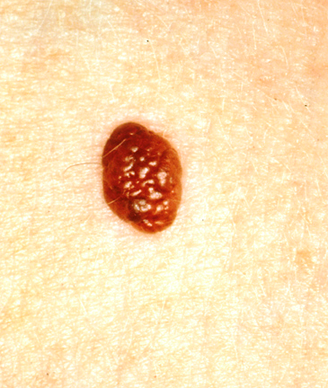Is Breast Cancer Risk Predicted by Moles?
Researchers from Harvard Medical School and Indiana University found that women who had a greater number of nevi may be more likely to develop breast cancer, independent of other breast cancer risk factors.
Women who had a greater number of moles may be more likely to develop breast cancer.

Cutaneous nevi could be a way to predict breast cancer risk, according to two new studies published in PLOS Medicine. Researchers from Harvard Medical School and Indiana University found that women who had a greater number of nevi may be more likely to develop breast cancer, independent of other breast cancer risk factors. The number of cutaneous nevi was linked to estrogen receptor (ER)-positive breast cancer only (hazard ratio = 1.09).
The researchers analyzed data from two prospective cohorts: the Nurses’ Health Study in the United States and the E3N Prospective Cohort in France. The Nurses’ Health Study included 74,523 female nurses who were followed for 24 years (1986 to 2010). The E3N Prospective Cohort included 89,902 women who were followed for 18 years.
In the Nurses’ Health Study, 5,483 cases of invasive breast cancers were documented. Adjusting for breast cancer risk factors, women with more cutaneous nevi had a 4% higher relative risk of breast cancer compared with women with no nevi (P = .003). The women who had more than 15 nevi had a 35% higher relative risk compared with women with no nevi. Over the 24-year follow-up period, the absolute risk of developing breast cancer increased by 0.34% for the women with 1–5 nevi and by 2.92% for the women who had 15 or more nevi compared with those with no nevi (from 8.48% to 8.82% and 8.48% to 11.4%, respectively).
In a further analysis, the association between nevi and breast cancer risk correlated with hormone levels. The 611 postmenopausal women with 6 or more nevi who were not diagnosed with breast cancer had a 45.5% higher level of estrogen and a 47.4% higher level of testosterone compared with women with no nevi (P = .001).
In the E3N Prospective Cohort, women who reported many nevi had a 13% higher risk of breast cancer compared with those who reported no nevi (P = .04). Still, this association was not statistically significant after adjustment for breast cancer risk factors, such as family history.
These studies suggested that skin moles may be an easily measurable biomarker to help estimate breast cancer risk. During pregnancy, when hormone levels are increased, melanocytic moles typically become darker, suggesting a potential link between hormones and nevi. Based on the analysis of the Nurses’ Health Study, the authors concluded that the results “suggest that the number of cutaneous nevi may reflect plasma hormone levels and predict breast cancer risk independently of previously known factors.”
Despite the prospective nature of these studies, the observations still need to be confirmed with additional studies. Limitations noted by the authors of both studies included the self-reporting of nevi, as well as the fact that the study participants were all Caucasian women. Whether these results translate to women of other ethnicities remains to be seen.
In a perspective on the E3N Prospective Cohort study, Victor Cardenas, MD, and Barbara Fuhrman, PhD, of the University of Arkansas for Medical Sciences, stated that the association between nevi and breast cancer risk is unlikely to be causal, as melanocytic nevi are derived from melanocytes while breast cancer cells are of epithelial origin. “It seems likely instead that the observed associations reflect a shared cause or causes.”